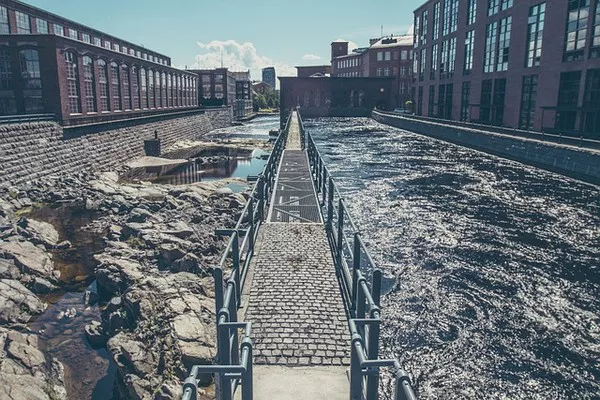In the pursuit of sustainable and environmentally friendly wastewater treatment options, reed bed sewage systems have emerged as a viable and innovative solution. This eco-friendly technology utilizes natural processes and vegetation to treat wastewater effectively, minimizing the environmental impact associated with traditional sewage treatment methods. In this article, we will delve into the concept of reed bed sewage systems, exploring their components, functionality, benefits, and potential applications.
Components of Reed Bed Sewage Systems:
A reed bed sewage system consists of several key components working in harmony to treat wastewater naturally. The primary elements include the inlet chamber, distribution pipes, the reed bed itself, and the outlet chamber.
Inlet Chamber: The wastewater enters the reed bed sewage system through the inlet chamber, which serves as the initial point of entry for raw sewage. In this chamber, solids settle, and some preliminary treatment occurs, allowing for a more refined flow into the subsequent components.
Distribution Pipes: Following the inlet chamber, distribution pipes evenly distribute the pre-treated wastewater across the surface of the reed bed. These pipes are essential for maintaining a consistent flow and ensuring that the reed bed receives an equal distribution of wastewater.
Reed Bed: The heart of the system lies in the reed bed, a carefully engineered environment where natural processes and microorganisms work together to break down pollutants in the wastewater. The bed is typically filled with a combination of gravel, sand, and specially selected reed plants, creating an ideal habitat for microbial communities.
Outlet Chamber: After passing through the reed bed, the treated water collects in the outlet chamber. Here, any remaining particles settle, and the clarified water is discharged for safe release into the environment or further treatment if necessary.
Functionality of Reed Bed Sewage Systems:
Reed bed sewage systems harness the power of nature to treat wastewater through a combination of physical, chemical, and biological processes. The roots of the reed plants provide a habitat for beneficial microorganisms that break down organic matter, while the substrate (gravel and sand) facilitates the filtration and absorption of pollutants.
Biological Processes: Microorganisms present in the reed bed play a crucial role in breaking down organic matter in the wastewater. Bacteria and other microbes thrive in the root zone, metabolizing pollutants and transforming them into harmless byproducts.
Filtration: The substrate in the reed bed acts as a natural filter, trapping suspended solids and allowing water to percolate through. This physical filtration process removes impurities, suspended solids, and nutrients from the wastewater.
Absorption: Reed plants contribute to the absorption of nutrients, such as nitrogen and phosphorus, helping to prevent nutrient pollution in the treated water. This aspect is particularly important for protecting aquatic ecosystems downstream.
Benefits of Reed Bed Sewage Systems:
Environmental Sustainability:
One of the primary advantages of reed bed sewage systems is their minimal environmental impact. Unlike conventional treatment methods that often involve energy-intensive processes, reed beds rely on natural processes, reducing the carbon footprint associated with wastewater treatment.
Low Operating Costs:
Reed bed sewage systems have lower operational and maintenance costs compared to traditional treatment plants. The reliance on natural processes requires less energy and fewer chemicals, making it a cost-effective and sustainable solution for decentralized wastewater treatment.
Aesthetic Integration:
Reed beds can be aesthetically pleasing, especially when integrated into landscaping or green infrastructure projects. This allows for the harmonious blending of wastewater treatment facilities with the surrounding environment, contributing to the overall appeal of the area.
Applications of Reed Bed Sewage Systems:
Rural and Remote Areas: Reed bed sewage systems are well-suited for rural and remote areas where centralized wastewater treatment infrastructure may be impractical or cost-prohibitive. Their decentralized nature allows for effective treatment without extensive pipework and infrastructure.
Small Communities: Small communities with limited wastewater treatment needs can benefit from the simplicity and efficiency of reed bed systems. These systems can be customized to accommodate the specific requirements of varying population sizes.
Industrial Wastewater Treatment: In certain industrial settings, reed bed sewage systems can serve as an eco-friendly solution for treating specific types of wastewater. Customization of the reed bed design can address the unique challenges posed by industrial effluents.
See Also What Happens When Water Reaches A Water Treatment Plant
Conclusion:
Reed bed sewage systems represent a sustainable and ecologically friendly approach to wastewater treatment. By harnessing the natural processes of plants and microorganisms, these systems provide an effective and economical alternative to traditional treatment methods. As the world seeks more environmentally conscious solutions, reed bed sewage systems stand out as a promising technology that combines efficiency with ecological sensitivity, offering a glimpse into a more sustainable future for wastewater management.

